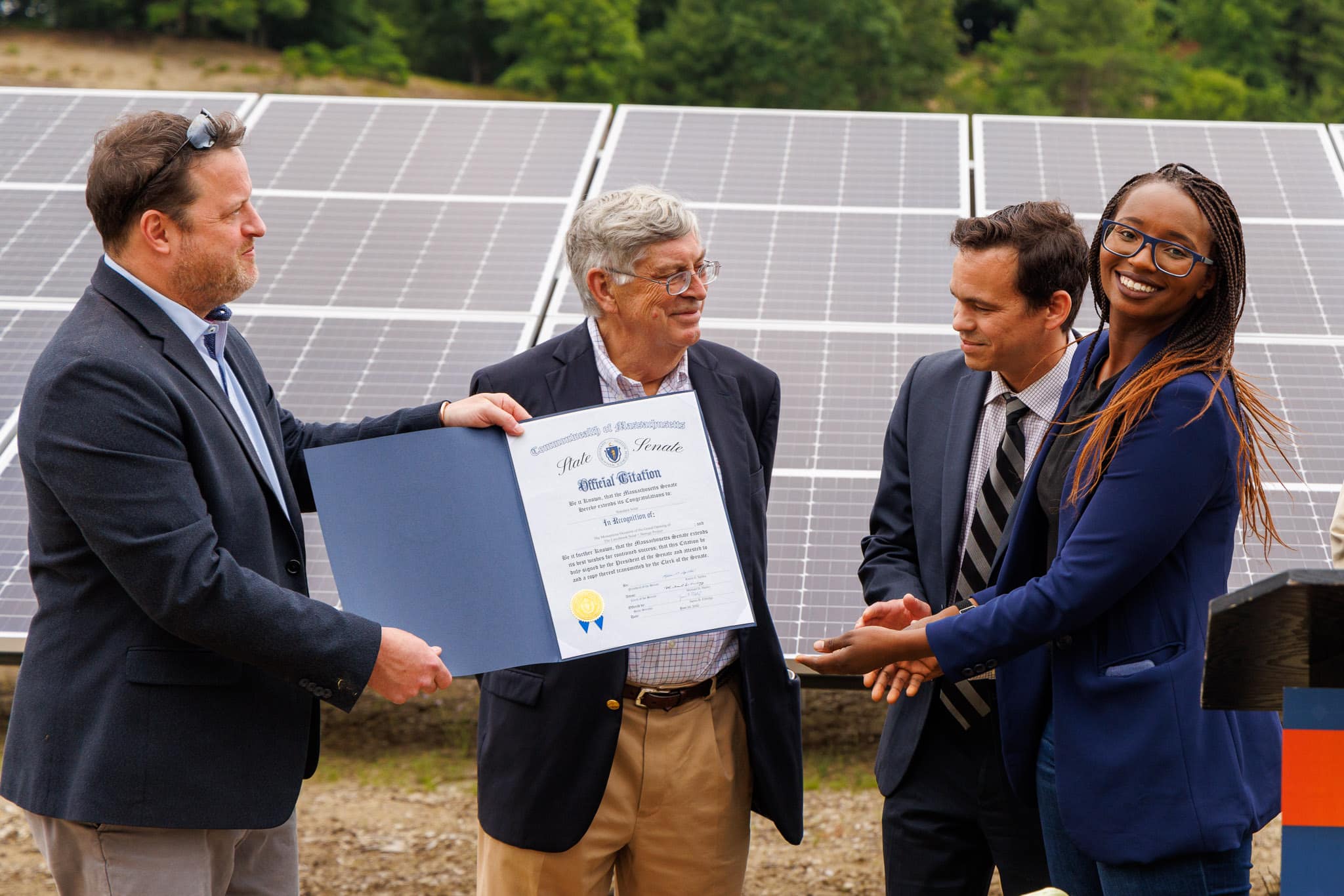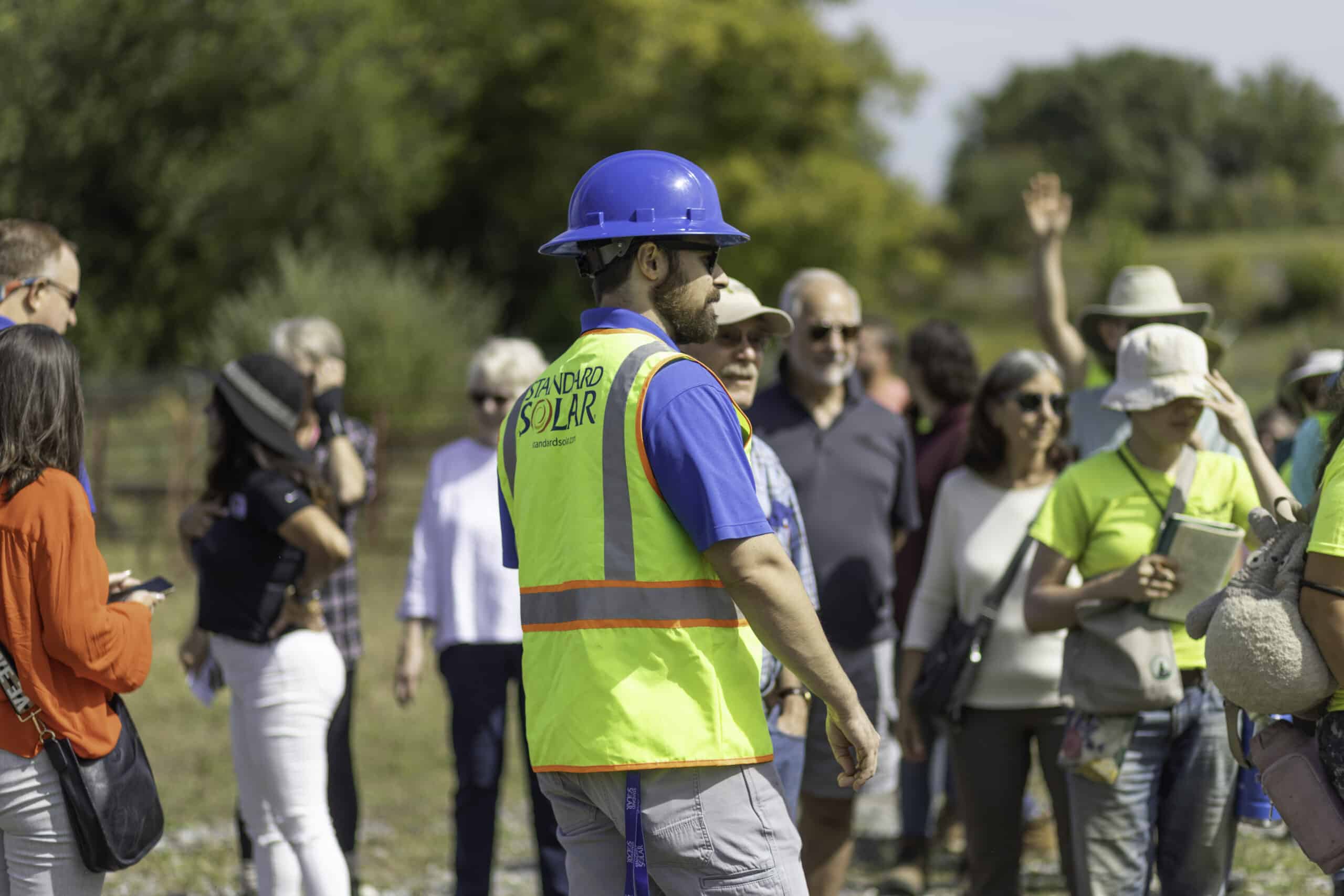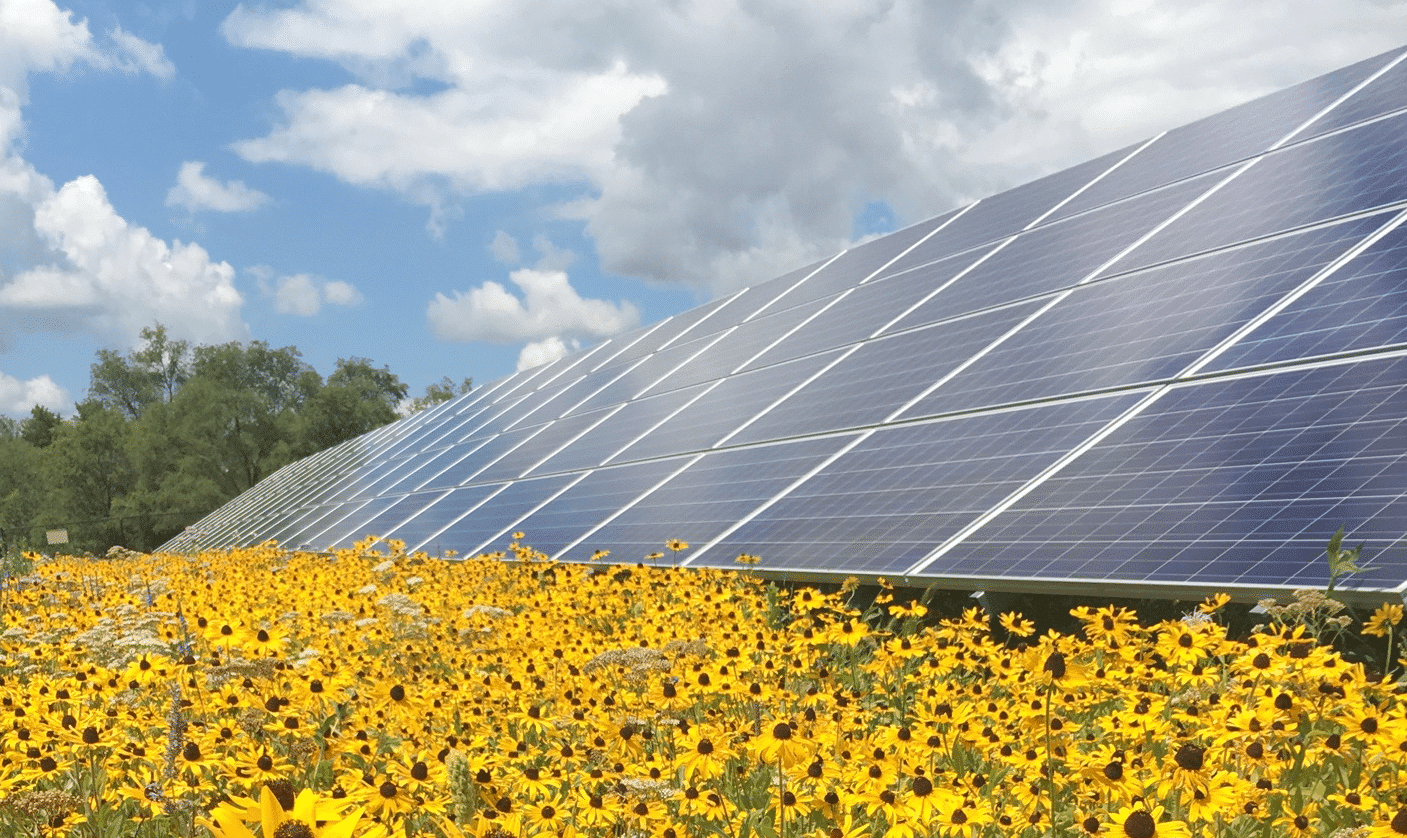CE DE – Harbeson Project
Harbeson, Sussex County, Delaware
The Harbeson Project, located in Harbeson, Sussex County, Delaware, is a 5.24 megawatts (MWdc) system which will deliver clean solar energy to the RFC Eastern Power Grid (RFCE). With an increased supply of solar energy, the Harbeson Solar Project contributes to Delaware’s goal of achieving 40% clean energy usage by 2035 while lowering greenhouse gas emissions within the region.
Covering 28.32 acres, this project includes 9,000 solar PV modules on a ground mounted racking system. This project will produce 9,050 megawatt hours (MWh) of renewable energy annually, avoiding the emissions of 3,189.82 tonnes of carbon dioxide equivalent (tCO2e1). This will significantly reduce reliance on fossil fuels and contribute to a cleaner environment in the areas of operation of Delmarva Power.
As a Community Solar Garden, the project is designed to expand access to solar energy for Delaware residents who may not have the financial means or space to install solar panels on their own properties. By participating in community solar, residents can benefit from lower electricity costs while supporting the transition to renewable energy.
Beyond its environmental impact, the project will provide economic benefits to the local community. It will create construction jobs and generate long-term tax revenue.
Construction is set to begin in mid-2025, with operations expected to start by late 2025, marking a significant step toward a more sustainable energy future for Delaware.
The system was carefully planned to avoid building over any wetlands, ensuring the preservation of local biodiversity.
Benefits
Economic Impact
The Harbeson Solar Project will deliver long-term economic benefits to Sussex County by creating local construction and vegetation management jobs. Beyond job creation, the project will generate substantial tax revenue to fund essential community services and infrastructure. Additionally, The system will supply energy at a reduced rate for subscribers, benefiting them with savings on their electricity bills.
By combining renewable energy development with sustainable land use, the project fosters economic growth and environmental stewardship, ensuring a lasting positive impact on the local community.
Clean Energy Impact
The Harbeson Solar Project will play a vital role in Delaware’s clean energy transition by generating approximately 9,050 MWh of carbon-free electricity annually. By providing enough power to cover the energy needs of 1,400 average U.S. homes, the project directly contributes to reducing greenhouse gas emissions in a state where electricity accounts for ~25% of total emissions. As a pollution-free energy source, solar power supports Illinois’ decarbonization goals while enhancing the resilience and sustainability of the local grid.
Avoided emissions calculated using the United Nations Framework Convention on Climate Change (UNFCCC) International Financial Institutions (IFI) technical working group on greenhouse gas accounting factors on avoided emissions: ~0.352tCO2e/MWh.
Offsets
The Harbeson Solar Project will offset up to 3,189.82 tCO2e yearly, contributing to Delaware’s climate change mitigation efforts. The emissions avoided are equivalent to the carbon absorption of over 3,200 acres of U.S. forests. By avoiding fossil fuel combustion, the project contributes to a cleaner energy grid in Delaware while supporting regional decarbonization goals.
Location
Sussex County, Delaware
Project Size
5.24 MWdc of clean energy
Timeline to operation
Construction is set to begin in mid-2025, with operations expected to start by late 2025.
The Harbeson Solar Project will generate 9,050 MWh of clean energy annually, enough to power approximately 1,400 homes and help Delaware reach its goal of 40% clean energy by 2035.
The project will offset up to 3,189.82 tCO₂e each year, equal to the carbon absorption of more than 3,200 acres of U.S. forest, while supporting access to affordable solar for Delaware residents.
Location
The Harbeson Solar Project is in an area with low population density in Sussex County, Delaware.
Strategically located in the Town of Harbeson, Sussex County, Delaware, the Harbeson solar project repurposes 28.32 acres of land to generate 5.24 MWdc of clean energy. Positioned within the Delaware power grid, the project will bolster regional grid reliability and contribute to the state’s goal of 40% renewable energy by 2030. The site’s design features pollinator-friendly vegetation, which protects biodiversity while supporting sustainable land management.
Economic Impact
The project will create jobs during both construction and operation, supporting local employment.
Tax revenue generated will help fund schools, emergency services and public infrastructure improvements in Kankakee County.
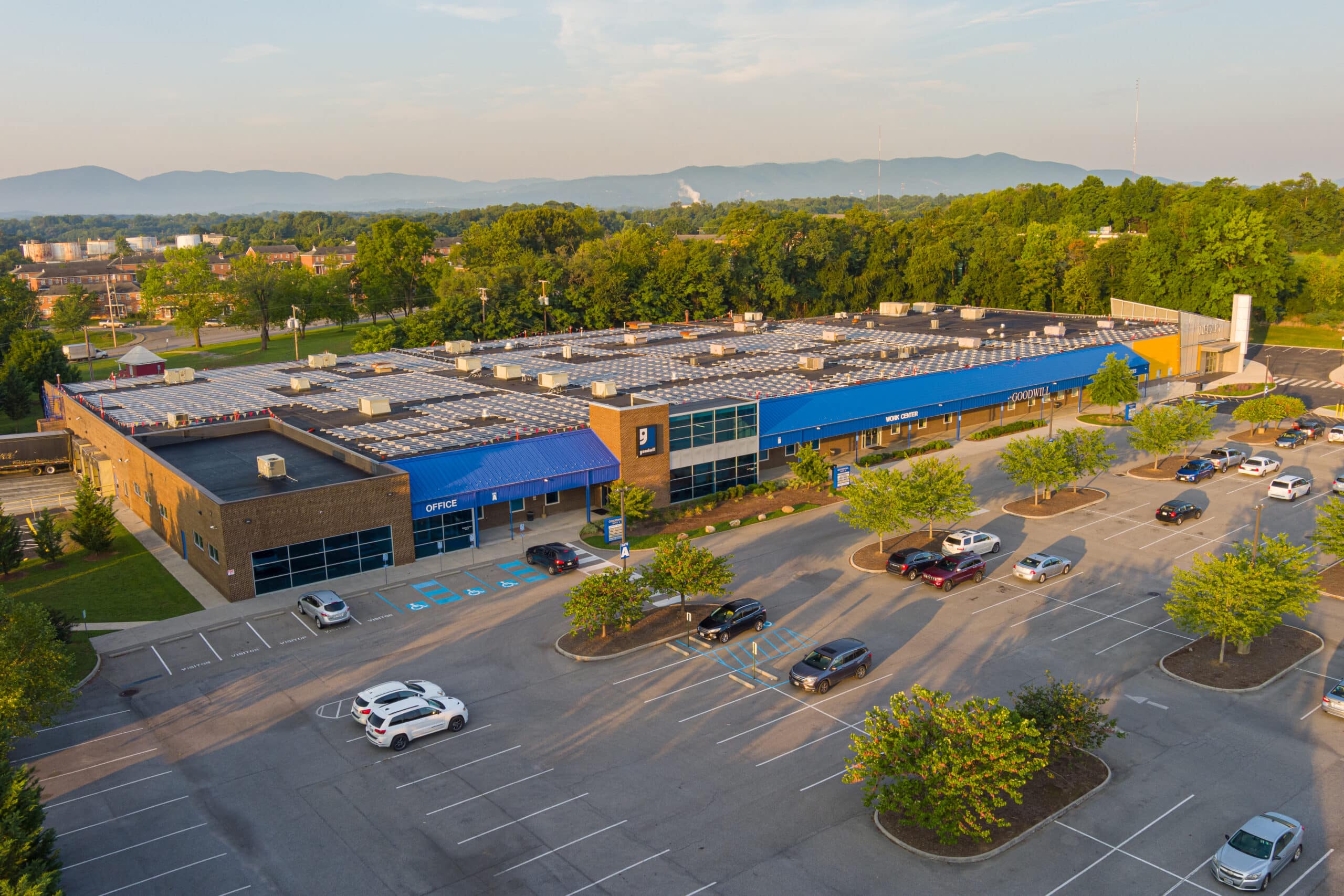
Goodwill Industries, VA, 0.5 MWdc
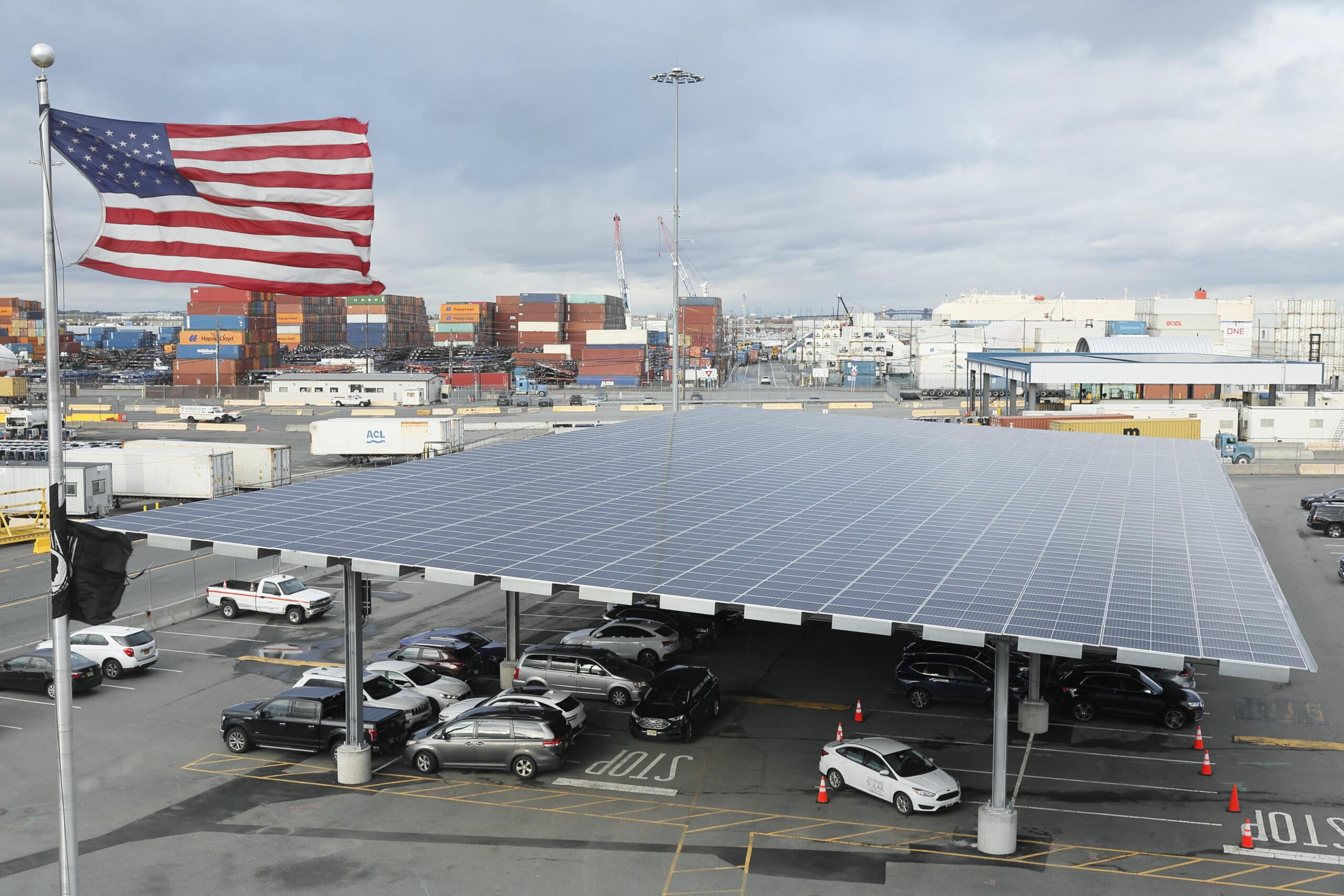
Port Newark Container Terminal, NJ, 3.29 MWdc
Clean Energy Impact
Solar panels produce clean electricity without emitting greenhouse gases or polluting the surrounding environment.
The project will significantly reduce Illinois’ reliance on fossil fuels, supporting statewide emissions reduction targets.
By integrating renewable energy into the Illinois grid, the project ensures a more reliable and sustainable power supply for local communities.
Environmental Impact
- Offsets up to 3,189.82 tCO₂e annually, equivalent to the carbon absorbed by over 3,200 acres of U.S. forests.
- Reduces reliance on fossil fuels, helping to build a cleaner, more sustainable energy grid in Delaware.
- Advances Delaware’s climate goals by supporting broader regional efforts to mitigate climate change through decarbonization.
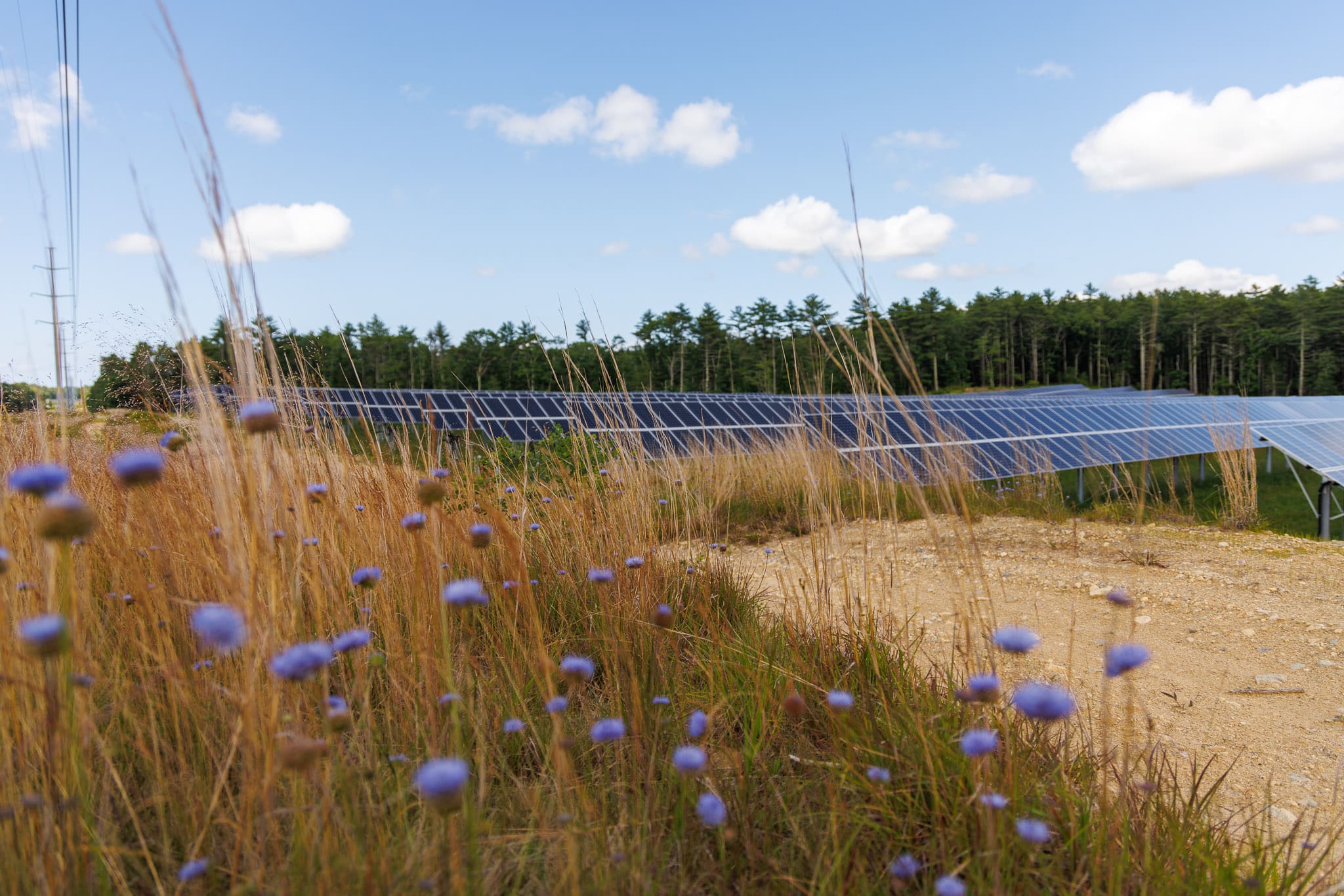
Carver, MA, 2.8 MWdc
Project Location
Where is the Harbeson solar project located and is it visible from public roads?
The Harbeson Solar Project is in Sussex County, Delaware, located approximately 1/2 mile east of the intersection between Harbeson and Lewes Georgetown Highway. The site is installed in former agricultural land. It will be barely visible from parts of the Lewes-Georgetown highway. The site will not be visible to residential areas.
Who owns the land on which the Harbeson solar project is built?
The Harbeson Solar Project will be built on privately owned land which will be rented by Standard Solar to operate the system. This land will be leased for a period of 25 years once the project is fully developed, subject to optional and voluntary two five-year renewal periods.
Safety & Operations
How do solar panels work?
Solar panels work by converting sunlight into electricity through a process called the photovoltaic effect. Each panel is made up of many solar cells, typically composed of silicon, a material that can absorb sunlight. When sunlight hits these cells, it excites electrons, creating an electric current. This current is collected and directed through wires to power homes, businesses, or the electrical grid. Solar panels are often installed in arrays to capture as much sunlight as possible, and they work best in sunny locations. By harnessing the sun’s energy, solar panels provide a clean, renewable source of electricity without producing harmful emissions.
What happens after the useful life of a solar project?
At Standard Solar, we are committed to sustainability throughout the entire lifecycle of our projects. The Harbeson solar project will produce electricity for 25 years. After this time, when the project reaches the end of its operational life, well-established processes are in place to ensure responsible repowering, decommissioning and recycling.
Standard Solar has programs and policies in place to safely remove equipment, restore the land to its original state, and recycle materials such as glass, metal and silicon from solar panels. These programs allow Standard Solar to minimize waste, prevent any burdens on the community, and support the circular economy, ensuring that renewable energy remains a sustainable solution for future generations.
Do solar projects make noise?
Solar projects are designed to operate quietly, making them an ideal option for generating renewable energy without disrupting nearby communities, agriculture or wildlife. The primary components–solar panels–make no noise during operation. Some equipment, like inverters or transformers, may produce a low humming sound when converting solar energy into electricity. The site’s equipment produces up to 80dB when at a 3-ft distance from the site. When standing at the property line, roughly 600 feet away from the equipment, the sound is barely perceptible at 45-50 dB, which is around the average ambient noise of a suburban neighborhood.
Will the project produce glare?
Solar projects, including this one, are designed to minimize the potential for glare. Solar panels are specifically engineered to absorb sunlight, not reflect it, as their primary function is to convert sunlight into electricity. Modern panels are coated with anti-reflective materials to further reduce reflection. Additionally, projects undergo detailed studies and modeling during the planning phase to ensure they do not create glare that could affect nearby residents, drivers, aviation and wildlife.
Environment & Wildlife
How will the project manage erosion and stormwater during its lifetime?
This project has been designed with comprehensive measures to manage erosion and stormwater effectively throughout its lifetime, ensuring minimal impact on the surrounding environment and no disturbances to wetlands or waterways. The project complies with all applicable local, state and federal environmental permits and certifications.
The site is not located in a major flood zone. Standard Solar’s arrays are designed to avoid 100-year flood plains and withstand 500-year flood plains. The site has established areas to conserve soil stabilization through topography management, handling of waste, washing and dewatering. To further stabilize the soil and prevent erosion, the site will be seeded with pollinator-friendly vegetation and trees with critical root systems are left untouched around the site.
What is the impact on area wildlife?
Standard Solar carefully considers the impact on wildlife and biodiversity in all ground mount projects to minimize disruption to local ecosystems. Detailed environmental studies are conducted to identify sensitive habitats and species and to mitigate potential adverse impacts.
Consultation with the U.S. Fish and Wildlife Service (USFWS) and the Sussex Conservation District
The USFWS states that Standard Solar’s project area does not include any critical habitats for threatened or endangered species. The USFWS warns that the Monarch Butterfly (proposed threatened) and the northern long-eared bat (federally threatened) could potentially occur on site.We have received approval from the Sussex Conservation District for our project’s sediment and stormwater management plan.
Creating a Wildlife-Friendly Site
The project incorporates several measures to enhance biodiversity and create a wildlife-friendly environment. Bat boxes will be installed along the perimeter to support local bat populations. The area will be seeded with native plants that provide food and shelter for bees, beetles, butterflies and birds. Wildlife-friendly fencing and vegetation buffers will be implemented to ensure the safe movement of animals and birds throughout the site. Additionally, ongoing monitoring will be conducted to minimize environmental impact and ensure compliance with biodiversity and ecosystem protection regulations.
